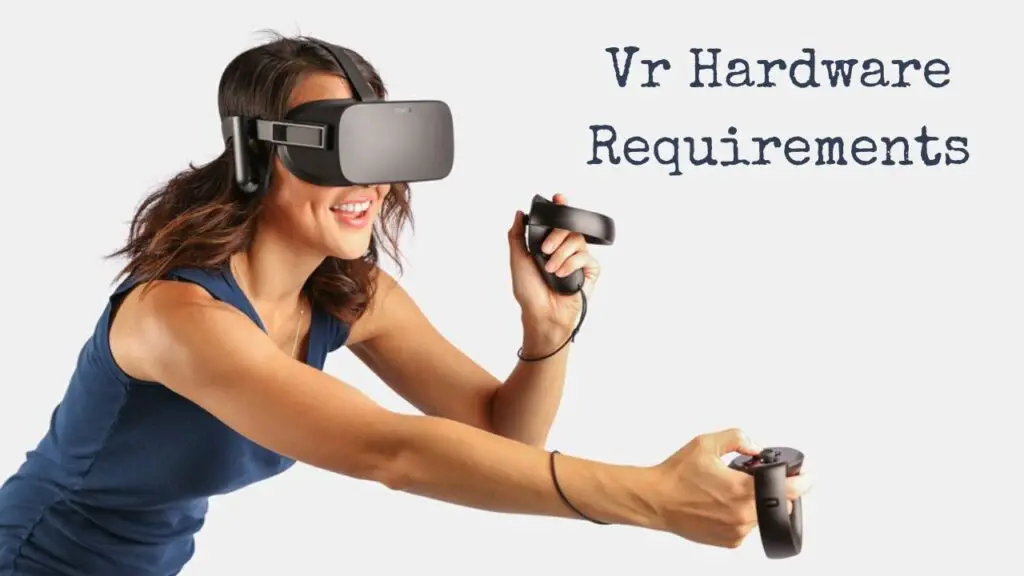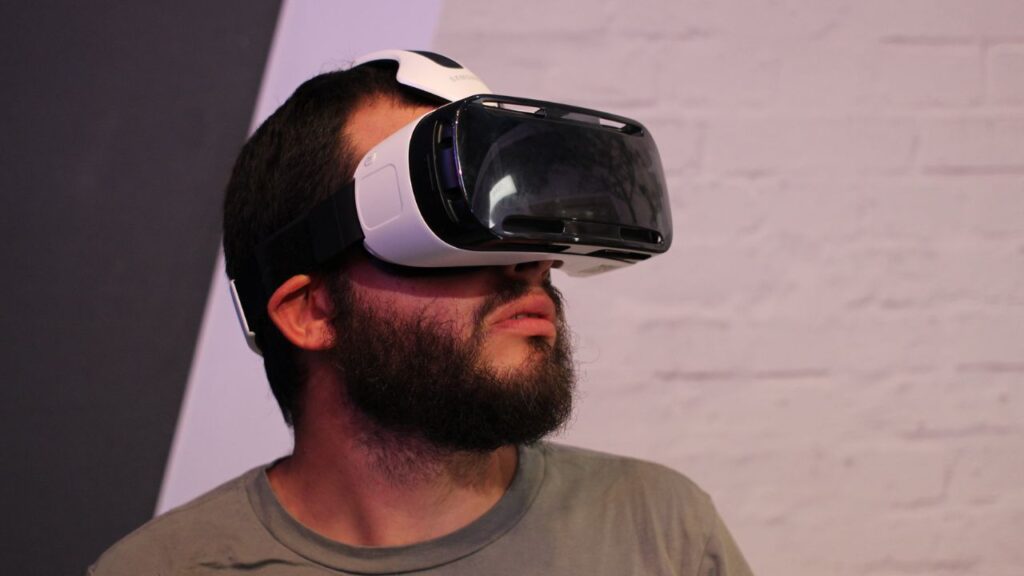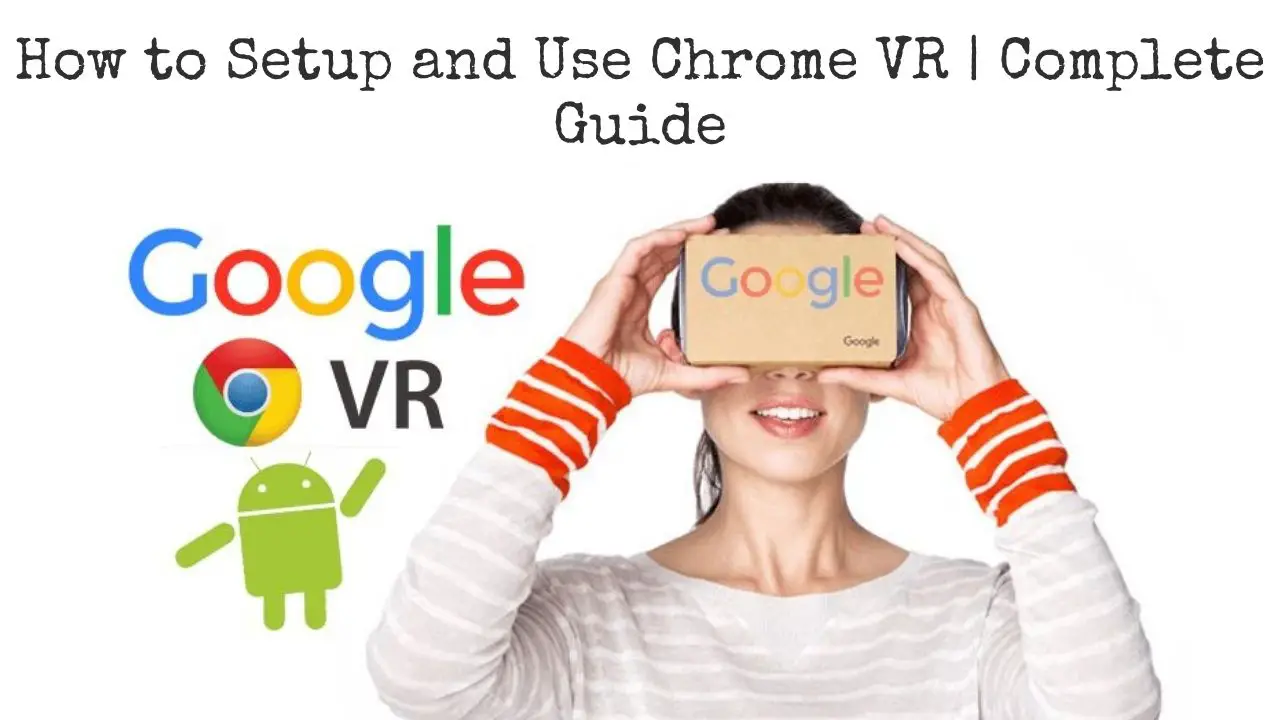Chrome VR is powered by Google, is a virtual reality platform that brings immersive experiences right to your browser. It’s a revolutionary technology that allows users to explore the digital world without needing any special hardware.
But why should you use Chrome VR? The answer lies in its accessibility and versatility. With Chrome VR, you can immerse yourself in a variety of applications and games, from educational simulations to thrilling adventures, all within the comfort of your own home.
Plus, it’s easy to set up and use, making it a perfect choice for both tech enthusiasts and those new to virtual reality. This guide will walk you through the process of setting up and using Chrome VR, making your online experience more interactive and exciting.
So, let’s dive into the world of Chrome VR and discover what it has to offer!
System Requirements
The System Requirements section is crucial as it helps ensure that your device is compatible with Chrome VR. Here’s a quick rundown of what you need to know:
Hardware Requirements
You have to ensure that you have a system having following hardware properties to ensure the smooth and good VR Experience.

| Category | Minimum Requirement | Recommended |
|---|---|---|
| Operating System | Windows 7 or later, macOS 10.10 or later | Latest version of Windows or macOS |
| Processor | Intel Core i5 or equivalent | Intel Core i7 or higher |
| Graphics Card | NVIDIA GeForce GTX 970 or better, or AMD Radeon RX 480 or better | NVIDIA GeForce RTX 20 series or AMD Radeon RX 5000 series |
| RAM | 8 GB or more | 16 GB or more |
| Storage | 1 GB available space | 1 TB or more |
| VR Headset | Compatible VR headset required | Oculus Rift S or HTC Vive Pro |
These recommendations are based on current market standards and should provide a smooth and high-quality VR experience. However, always check the latest compatibility lists before making a purchase.
Software Requirements
The software requirements for Chrome VR are equally important as the hardware requirements. They ensure that your system runs the software smoothly and effectively. Here’s a brief overview:
| Category | Minimum Requirement | Recommended |
|---|---|---|
| Browser | Google Chrome version 64 or later | Latest version of Google Chrome |
| Operating System | Windows 7 or later, macOS 10.10 or later | Latest version of Windows or macOS |
| Graphics Driver | Up-to-date graphics driver | Up-to-date graphics driver |
| Chrome Extensions | WebGL, WebRTC, Web Audio, and Media Source Extensions enabled | Same as minimum requirement |
Please note that these are the basic software requirements. Depending on the specific application or game you’re trying to run in Chrome VR, there might be additional requirements. Always ensure that your system meets all the necessary requirements for the best VR experience.
Installation And Use of Chrome VR
The Installation Process is where the magic happens. It’s time to turn your computer into a VR powerhouse. Here’s a step-by-step guide:
- Update Google Chrome: Make sure you’re running the latest version of Google Chrome. You can check this by clicking on the three dots in the top right corner, then Help > About Google Chrome.
- Enable Virtual Reality: Go to chrome://flags in your address bar, search for “WebVR”, and set it to “Enabled”.
- Restart Chrome: Close and reopen Chrome for the changes to take effect.
- Download and Install a VR Headset: Choose a compatible VR headset and follow the manufacturer’s instructions for installation.
- Connect Your VR Headset: Plug in your headset and connect it to your computer via USB.
- Launch Chrome VR: Click on the VR icon in the top right corner of Chrome.
If you encounter any issues during installation, don’t worry. We’ve got you covered:
- Check Your Graphics Card: Make sure your graphics card is up-to-date and compatible with Chrome VR.
- Reinstall Chrome: If all else fails, try uninstalling and reinstalling Google Chrome.
Remember, patience is key. Once you’ve navigated these steps, you’ll be ready to dive into the world of Chrome VR!
Navigating Chrome VR
Navigating Chrome VR is like stepping into a whole new world. Here’s a quick guide to help you get started:
Basic Navigation Controls
- Movement: Use the arrow keys on your keyboard to move around in the VR environment. Pressing the left or right arrow key will rotate your view, while pressing up or down will move forward or backward.
- Look Around: To look around without moving, hold down the Shift key and use the mouse to drag your view.
- Interact: To interact with objects in the VR environment, click on them with your mouse. Some objects may require you to click twice.
Understanding the User Interface
- Menu: At the top of the screen, you’ll see a menu with various options. These include settings, help, and exit.
- Scene: Below the menu, you’ll see the main scene. This is where all the action takes place.
- Controls: On the left side of the screen, you’ll find the control panel. This shows your current position and direction, as well as any active interactions.
Remember, practice makes perfect. The more you navigate Chrome VR, the more comfortable you’ll become.
Features of Chrome VR
Exploring the features of Chrome VR is like unlocking a treasure trove of virtual experiences. Here’s a snapshot of what you can expect:
Immersive Applications and Games: Chrome VR offers a wide range of applications and games that you can explore. From educational simulations to thrilling adventures, there’s something for everyone. Simply click on the app or game you want to play, put on your VR headset, and dive in!
Interactive Objects: One of the most exciting aspects of Chrome VR is the ability to interact with objects in the VR environment. Whether it’s picking up a virtual object or manipulating a 3D model, the possibilities are endless. Just click on the object you want to interact with, and you’ll be guided through the process.
Customization: Chrome VR also allows you to customize your VR experience. You can adjust the field of view, change the background color, and even modify the lighting conditions. All these settings can be found in the settings menu, accessible from the main menu.
So, gear up and start exploring the vast universe of Chrome VR. Each interaction is a new discovery, waiting to be made.
Advance Usage
6DoF (Degrees Of Freedom) Head Tracking: This is a feature that allows for more realistic movements in the VR environment. Instead of just rotating your view, 6DoF head tracking enables you to move freely in all directions. This is particularly useful for games and simulations that require more complex movements.
To enable 6DoF head tracking, go to the settings menu in Chrome VR. Look for the option labeled “6DoF” and toggle it on. Once enabled, you can use the arrow keys on your keyboard to move around in the VR environment. Hold down the Shift key to look around without moving.

Remember, 6DoF head tracking can sometimes cause motion sickness, especially for those who are sensitive to rapid movements. If you experience discomfort, try reducing the speed of your movements or turning off the feature.
With 6DoF head tracking, the possibilities for immersive VR experiences are virtually limitless. So, why wait? Start exploring the depths of the digital world today!
Limitations Of VR Chrome
While Chrome VR offers a wealth of virtual experiences, it’s important to be aware of its limitations. Here are some key points to consider:
- Hardware Compatibility: Not all VR headsets are compatible with Chrome VR. Before purchasing a headset, make sure it’s listed on the official Chrome VR website.
- Performance: While Chrome VR is optimized for performance, some applications or games may still struggle to run smoothly, especially on lower-end systems.
- Limited Content: As a relatively new platform, Chrome VR doesn’t yet have as extensive a library of VR content as other platforms like SteamVR. However, the selection is growing rapidly.
- Technical Knowledge: Setting up and troubleshooting Chrome VR requires a certain level of technical knowledge. If you’re not comfortable with these tasks, you may need assistance from someone who is.
Despite these limitations, Chrome VR remains a powerful tool for anyone interested in virtual reality. By understanding its strengths and weaknesses, you can maximize your VR experience and overcome any challenges that come your way.
Future developments for Chrome VR
Google is continuously working on improving the platform, introducing new features, and expanding its capabilities. Here are some areas we can expect to see significant developments in the near future:
- Enhanced Interactions: Google is looking to enhance the level of interaction users can have with VR environments. This could include more complex gestures, improved hand tracking, or the ability to interact with objects in more natural ways.
- Expanded Library: As the VR ecosystem grows, we can expect to see a wider variety of applications and games available on Chrome VR. This includes everything from educational simulations to immersive storytelling experiences.
- Integration with Other Technologies: Chrome VR could also benefit from integration with other technologies. For instance, combining VR with artificial intelligence could result in more personalized and immersive experiences.
- Improved Performance: As VR technology becomes more powerful, we can expect Chrome VR to run smoother and faster. This could mean better frame rates, less lag, and overall more enjoyable experiences.
While these are just predictions, Google’s commitment to advancing VR technology means that Chrome VR is likely to continue evolving and improving in the future. Stay tuned for more exciting developments!
Comparing Chrome VR with other popular VR platforms like Oculus Rift and HTC Vive can highlight the unique advantages and drawbacks of each. Here’s a brief comparison:
| Platform | Strengths | Weaknesses |
|---|---|---|
| Chrome VR | Accessible: No need for expensive hardware. Just a compatible VR headset and a browser. Versatile: Can be used on any device with a web browser. Cost-effective: Cheaper entry point compared to dedicated VR devices. | Limited Content: Chrome VR’s library isn’t as extensive as other platforms. Performance: May struggle with heavy VR applications due to lack of optimization. Compatibility: Not all VR headsets are compatible. |
| Oculus Rift | High Quality: Offers high-resolution visuals for an immersive experience. Large Library: Has a wide range of games and applications. Community: A large and active community for support and sharing. | Price: Can be expensive, especially for the newer models. Hardware Requirements: Needs a powerful PC to run smoothly. Software: Works exclusively on Windows. |
| HTC Vive | Immersive: Provides a highly immersive VR experience. High-End Features: Comes with built-in controllers and motion sensors. Integration: Works seamlessly with SteamVR, a popular platform for VR games. | Price: Can be costly, especially for the Pro model. Limited Library: Less variety in games and applications compared to Oculus. Compatibility: Works with both Windows and Linux. |
Choosing between these platforms depends on your specific needs and preferences. If you’re looking for a cost-effective and accessible solution, Chrome VR is a great choice. If you’re willing to invest more and want a high-quality, immersive experience, then Oculus Rift or HTC Vive might be more suitable.
Also Read : How to Use the Samsung Gear VR With a PC
Frequently Asked Questions
Q: Is Chrome VR free to use?
A: Yes, Chrome VR is free to use. However, you’ll need a compatible VR headset, which may have a cost associated with it.
Q: Does Chrome VR work on mobile devices?
A: Currently, Chrome VR is only available on desktop computers. Mobile support is not yet available.
Q: Can I use Chrome VR without a VR headset?
A: No, a VR headset is required to use Chrome VR. Without it, you won’t be able to fully experience the immersive VR environment.
Q: How often is Chrome VR updated?
A: Google regularly releases updates to Chrome VR to improve performance and add new features. Check the official Chrome VR website for the latest updates.
Conclusion
In conclusion, Chrome VR opens the door to a world of immersive experiences, making virtual reality accessible and versatile. With easy setup, a diverse range of applications, and interactive features, it caters to both tech enthusiasts and newcomers.
While being cost-effective, it faces limitations in content and performance. As Google continues to develop Chrome VR, we can anticipate exciting enhancements, making it an evolving platform worth exploring for those seeking an entry point into the captivating realm of virtual reality. Dive into Chrome VR and embark on a journey of endless possibilities!



